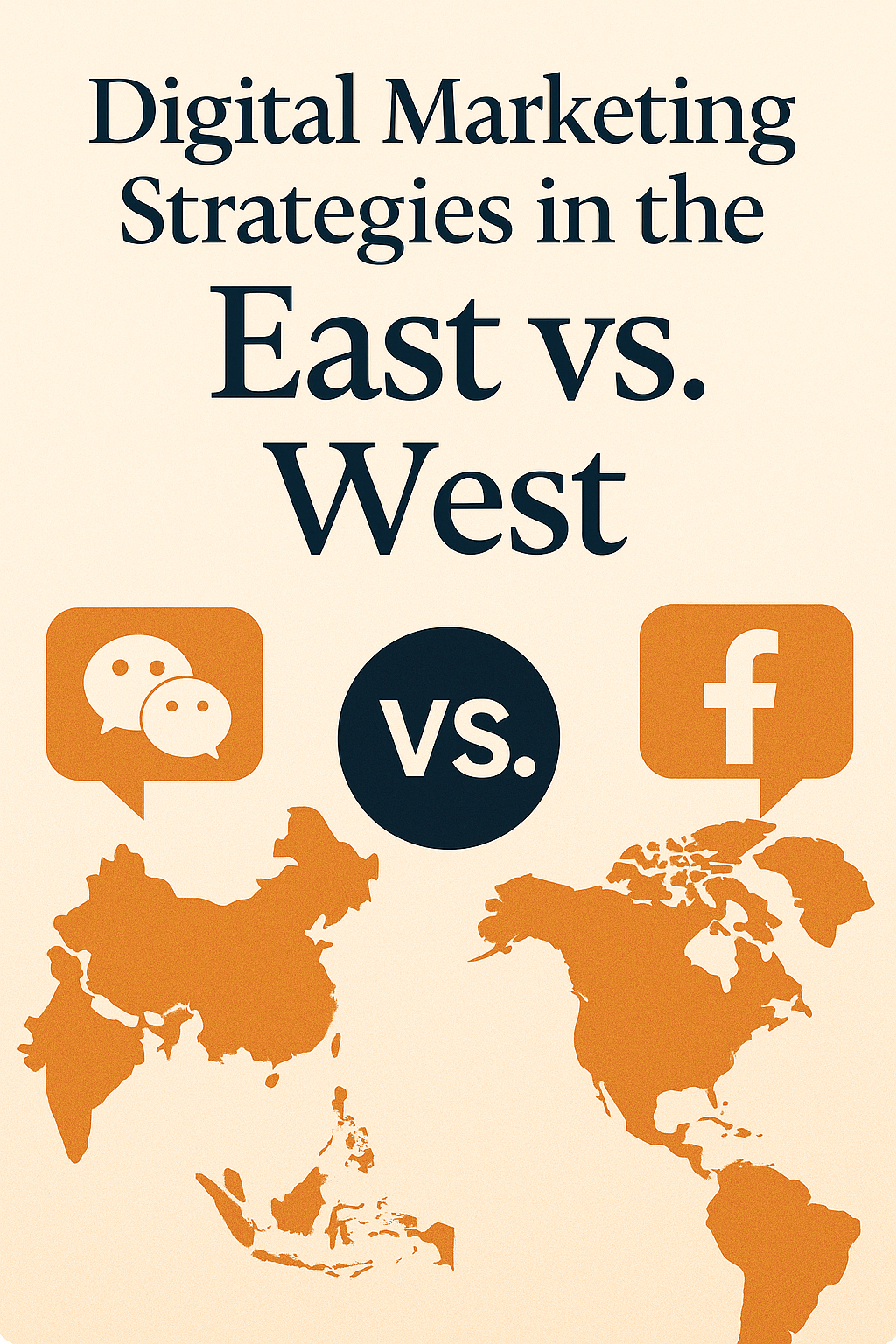🌐 Introduction
Digital marketing is often hailed as a global equalizer — a space where anyone, anywhere, can build a brand, run ads, or sell products. But is it truly universal? The answer: partially. While the core principles of digital marketing remain consistent, the strategies, platforms, and cultural nuances differ dramatically between Western and Eastern markets. For brands seeking to scale globally, understanding these differences is no longer optional — it’s essential.
🧩 What’s Universal in Digital Marketing?
Regardless of geography, most digital marketing efforts aim to:
- Increase brand visibility
- Drive qualified traffic
- Generate leads and conversions
- Build trust and loyalty
These objectives are pursued through common tools like:
- SEO & PPC
- Social media marketing
- Email campaigns
- Influencer marketing
- Analytics platforms
However, how these tactics are implemented — and where — varies significantly across cultures.
🌏 East vs. West: The Key Differences
1. Platform Preferences
- Western Markets (US, UK, Europe):
- Facebook, Instagram, LinkedIn, YouTube, TikTok
- Google Search dominates (~90%+ market share)
- Eastern Markets (China, Japan, Southeast Asia):
- WeChat, Weibo, Xiaohongshu, Douyin (China’s TikTok)
- Baidu (China), Naver (Korea), LINE (Japan), Shopee (SEA)
💡 Marketers must choose region-specific platforms for relevance and reach.
2. Cultural Communication Styles
- West: Values direct messaging, minimalism, and individualistic appeal.
- East: Prefers high-context communication, symbolic visuals, and group harmony.
🎨 Design, tone, and messaging must align with local expectations — a hard sell in the US may feel abrasive in Japan.
3. E-Commerce Behaviors
- West: Shoppers are used to navigating standalone platforms like Shopify, Amazon, or brand sites.
- East: Transactions often occur inside super-apps like WeChat, Tmall, or Shopee.
🛒 East Asian markets blur the line between content and commerce with seamless in-app purchases.
4. Search Engine Optimization (SEO)
- Google SEO is the gold standard globally, but…
- Baidu in China requires local hosting, simplified Chinese, and ICP licensing.
- Naver in Korea favors blog content over traditional SEO formats.
🔍 SEO isn’t a copy-paste approach; it demands technical and linguistic localization.
5. Influencer Marketing
- West: Influencers = niche experts or lifestyle creators.
- East: Key Opinion Leaders (KOLs) hold celebrity-like influence and often operate via livestream shopping.
📱 Choosing the right type of influencer per region impacts trust and conversions.
🌍 The Global Takeaway
Digital marketing is not one-size-fits-all. It’s a global framework with local rules. A Western-centric strategy may flounder in Asia, while Eastern platforms may not gain traction in the West. Success lies in:
- Cultural localization: Tailor voice, visuals, and value propositions.
- Platform alignment: Choose tools where your audience already lives.
- Trust building: Know the trust dynamics of each market — they differ wildly.
- Measurement: Local analytics tools may vary, but results must be aligned with business KPIs.
🔑 Final Thoughts
If you’re expanding beyond borders, your marketing mindset must expand too. Digital marketing is only universal at the strategic level — the execution must respect and reflect local cultures, behaviors, and platforms.
As marketers, the opportunity is immense — but so is the responsibility to meet global audiences on their own terms.



Leave a Reply